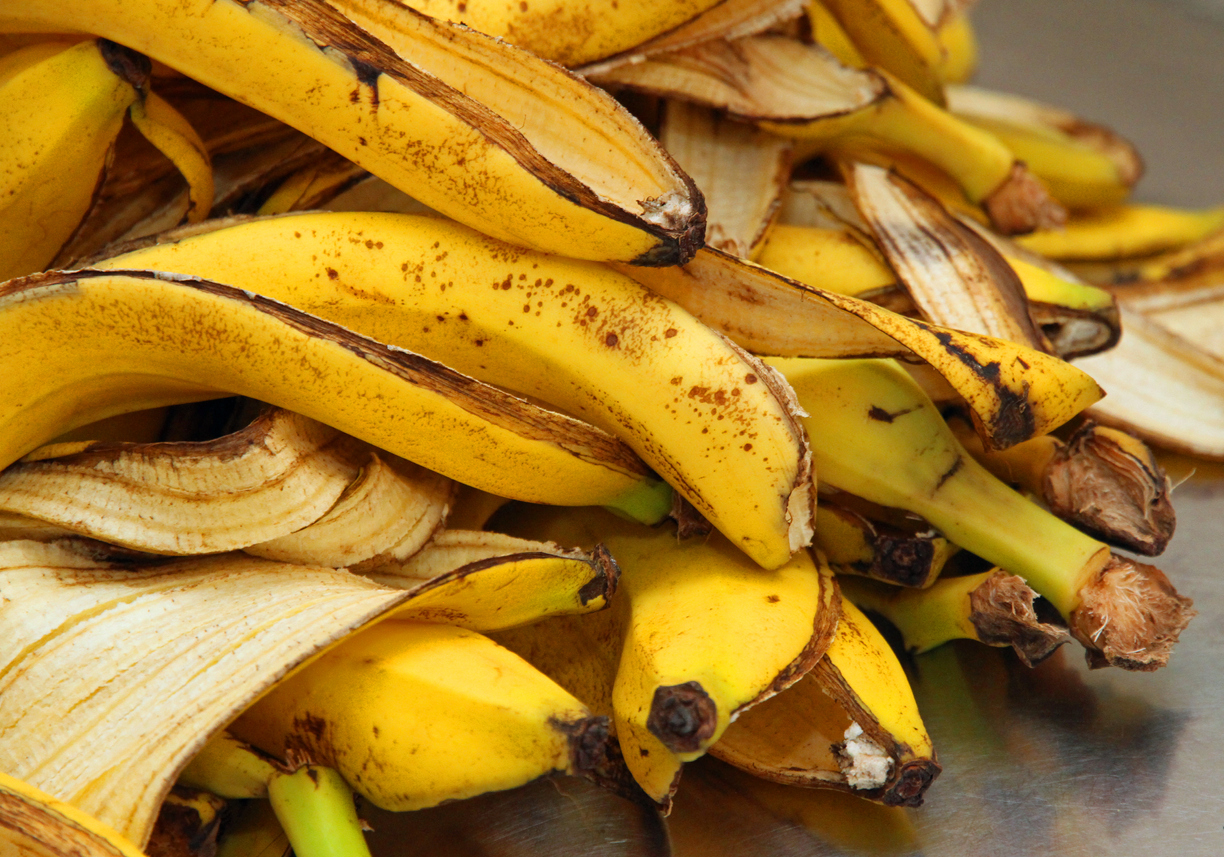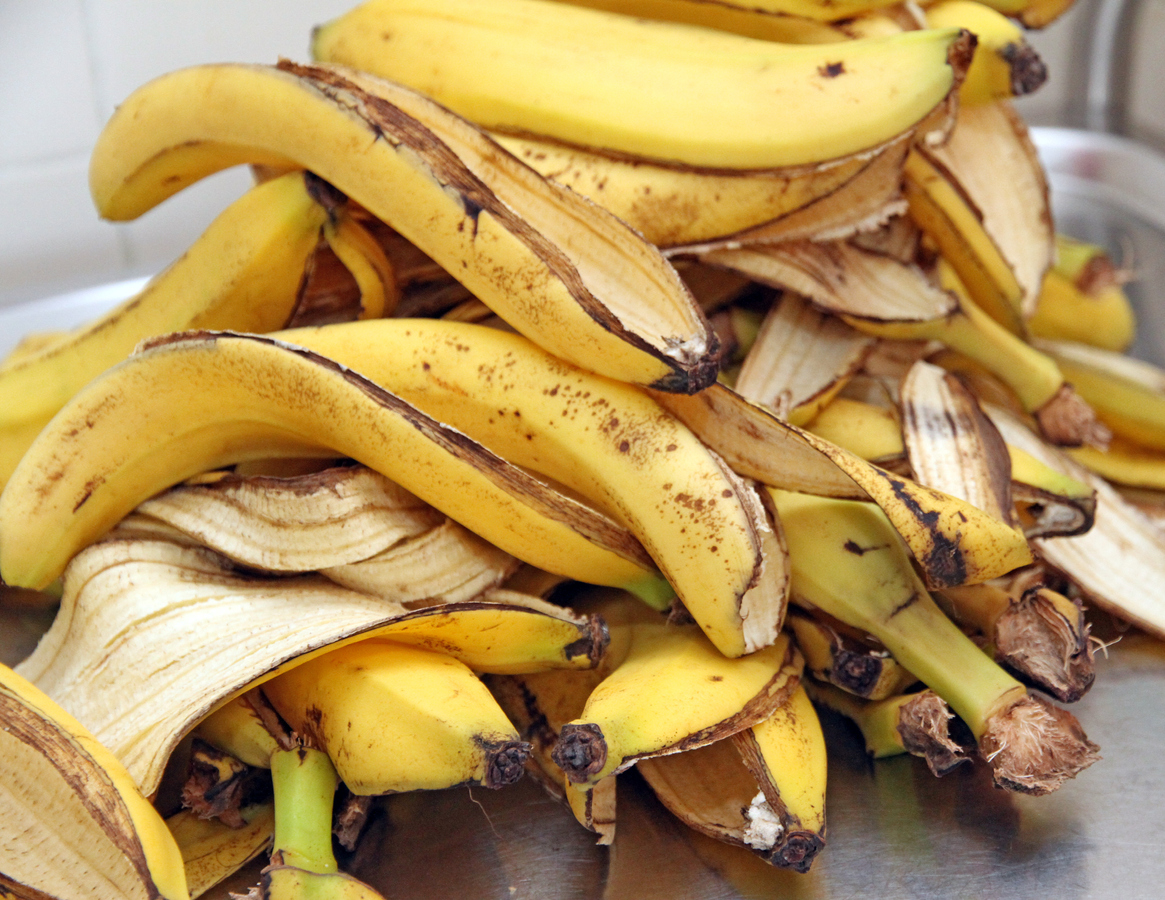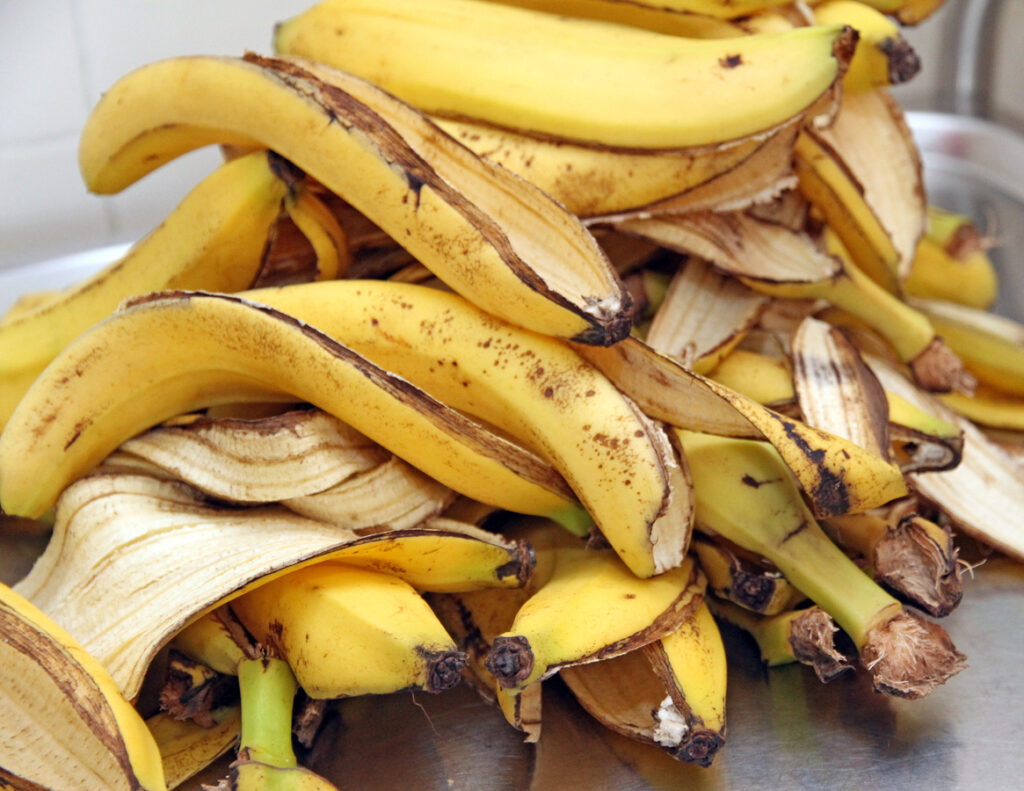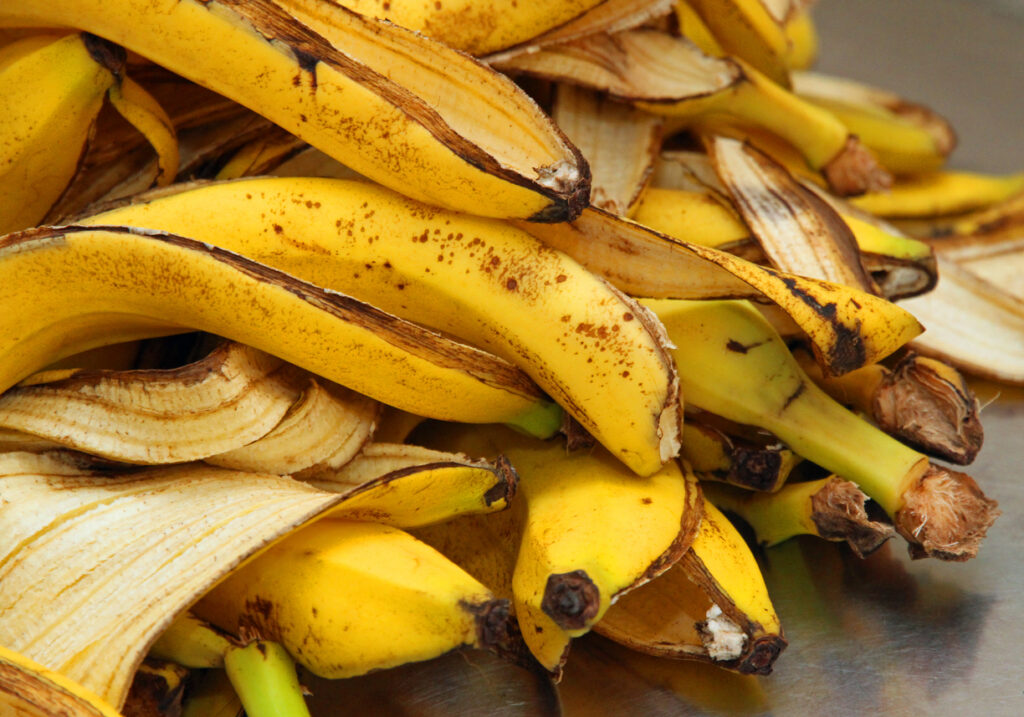Banana Peel Compost – How To Make And Use Banana Peel Compost In Your Garden
Banana peel compost is probably the best way to feed your garden plants at a fraction of the cost of commercial fertilizers. And did we mention that you’ll keep the environment clean and put those banana peels, that usually end up in the garbage, to good use? As it turns out, banana peels are just as packed with nutrition as the sweet banana itself. Plants, unlike humans, are not finicky, and if you can’t eat the banana peels, your plants will.
But as we’ll see later there are many benefits and uses for the humble banana peel. The only drawback is that it’s slow to decompose and release its nutrients. This is why experts recommend using banana peel compost in your garden instead of the raw peels. So how would you go about composting it? It’s actually much simpler than it sounds. Read on to find out all about how to make banana peel compost and use it in your garden.
Benefits of Banana Peel Compost
Some gardeners swear by their homemade banana peel compost and could go on for hours about the magical powers it has. Others, just shrug their shoulders and say they prefer their vermicast. But instead of comparing the upsides of banana peel compost with other organic materials, why don’t we let the numbers talk?
On average, the banana peel has about 3.5 percent of its weight in protein. As you’re aware, there’s about 16 percent nitrogen in plant protein. That means the raw banana peel that you often throw away has about 0.6 percent nitrogen. It also has about 4.6 percent potassium. This gives you about 11.5 percent of potassium in the final product.
In addition, you get other nutrients from your banana peel compost even if in trace amounts. It has about 0.8 percent calcium, 0.2 percent magnesium, and 0.3 percent phosphorus. Add in 31 percent sugar in the raw peel that will keep the worms happy while they ferment the banana peels.
All of this points to a highly nutritious fertilizer that feeds your roses, veggies, and herbaceous perennials without the drawbacks of chemical fertilizers. You can make a spray or a tea out of the compost and use it on sensitive plants that prefer mild or diluted fertilizers.
How to Make Banana Peel Compost
Although you can use the banana peels whether fresh or dried directly in the garden, experts recommend that you compost the peels for better results. Granted, the idea of having rotting banana peels in your garden is not an idea that would appeal to everyone. But when you consider that you’ll be getting a free and potent fertilizer, suddenly the smell and crawling worms become a mere inconvenience or a nuisance. So let’s see how you can go about composting your banana peels.
- When it comes to making organic compost in your garden, the key is to select a remote and isolated corner preferable downwind so you don’t get the occasional noxious odors wafting through your window.
- Collect other organic materials such as fallen leaves, decaying stems, dead grass, faded flowers, wood shavings, and twigs from your garden and add them to the pile in the remote corner.
- Break the twigs and stems into small pieces. Make sure to have more of these brown materials as they’re rich in carbon which is essential to the composting process.
- Use a kitchen knife to cut the banana peels and any discarded banana flesh into small pieces about one or two inches. The smaller the pieces the faster they will break down and compost.
- Add the banana peels to the compost pile along with other green materials such as fruits and vegetable scraps. Cut all the organic materials you add into tiny morsels. They’re rich in nitrogen which interacts with the carbon in the brown materials to speed up composting.
- Arrange your compost pile into alternating layers of green and brown materials.
- Sprinkle water all over the pile to make it damp. If it’s dry, it won’t compost properly.
- Keep adding other organic materials such as eggshells and ground coffee to the pile along with both green and brown materials.
- As the banana peels break down, this creates a lot of heat. Use a pitchfork to stir the compost pile at least once every couple of days. This allows oxygen into the depth of the pile and mixes the different materials.
- Keep stirring the pile to maintain the temperature and level of moisture until the compost is totally broken down and becomes ready to use.
- After a week, the composting process is complete and you can start using the compost in your garden.
How to Use Banana Peel Compost in your Garden
As you can see, you can keep your banana peel compost pile going. You add organic materials and collect the fresh compost. When you think you’ve had enough compost, for now, you can stop adding banana peel and get rid of the leftovers. Now that you have the compost, how can you use it in the garden?
Banana peel compost is rich in potassium. So it’s a safe fertilizer to add to vegetables such as tomatoes, potatoes, peppers, spinach, and other leafy green veggies. Flowering plants such as roses and daisies that are notorious for being too sensitive to chemical fertilizers will get a growth boost out of this mild compost.
Some gardeners prefer to make a spray out of the compost. This makes it easier to apply since you can use it on a whole batch of plants or veggies at the same time. A banana peel compost spray also gives you better control over the concentration and amount of nutrients the plants receive with every application. It reaches the roots of the plants faster than granular fertilizers or slow-release organic fertilizers. The spray is also more economical than other types of fertilizers since it’s less likely to be blown away by the wind or getting absorbed by weeds.
Tips for Composting Banana Peels
There is always more than one way to go about composting the banana peels. Whether you prefer to pile the ingredients and let nature take its course or you prefer to use worms to break down the peels it’s up to you. However, each method has its advantages and downsides. Here are a few tips from the experts.
- Always keep a pile of leaves, shredded bark, dead grass, and twigs (brown materials) on standby to balance the green materials you add to the pile.
- To cut down on the stench and mess, you can compost the banana peels in a bin instead of a pile out in the open.
- Add red earthen worms to the bin and drop the banana peels whole. The worms will speed up the break down of the peels and other organic matter.
- During the processing, both carbon and nitrogen create a lot of heat. This heat sterilizes the bin and the compost.
- Keep in mind that composting banana peels in bins with worms takes up to three weeks. The compost pile is usually ready within one week or less.
- Stirring and aeration are essential to accelerating the composting of the peels. So rotate the bin regularly to allow the worms to break down every morsel of organic material there.
- Use a shovel to stir the pile of composting material to mix the moisture and oxygenate the pile.
- Open the lid of the bin from time to time to ensure a flow of oxygen into the bin. Both worms and microbes need oxygen to breathe and function.
- Banana peels have a high concentration of sugar which keeps the worms happy without the need to feed them.
Alternative Ways to Compost Banana Peels
Another easy way to compost banana peels is to dig a hole near the base of the plant and place a fresh banana peel then cover it with soil. The sugar in the peel attracts worms that work slowly to break it down and turn it into compost with much input on your side.
You can also use banana peels under mulch as a side dressing. Just make sure to cover the peels with the mulch and let nature and the handy earthworms take care of the rest.
Other Garden Uses for Banana Peels
As we have seen, it’s easy to make banana peel compost. But what else can you do with banana peels? Here are a few ways that you can put these peels to good use.
- Insect Trap: Houseflies are a nuisance. Fill a plastic container with apple vinegar and banana peels cut into small pieces. Shake well to release the odors of the banana and place the container in your garden. The houseflies population will dwindle after a few days.
- Aphid Control: Aphids can’t stand banana peels for some reason. When you use the peels as a side dressing under the mulch, you’re also keeping aphids away from your plants. That’s a fertilizer and a pest repellent all rolled into one.
- Banana Peel Vinegar: Slice some banana peels into a mason jar and add water. Keep it covered for a week then remove the banana peels. Let the juices in the jar ferment further and turn into vinegar. Add it to the soil to adjust its acidity and give your blueberries a boost.
- Fermented Peel Puree: This method is similar to the banana peel vinegar. But here you will use the fermented peels, not the juices. Put the peels in a blender to make a puree. Use it in small doses on your flowering plants to get bigger blooms with richer colors.
- Dry Peel Fertilizer: This is an easy way to make a fertilizer without the hassle of composting the peels. Slice your banana peels into long strips and place them in a hot oven at 140 degrees Fahrenheit. When the peels are totally dry, grind them and use the powder as an organic fertilizer.



